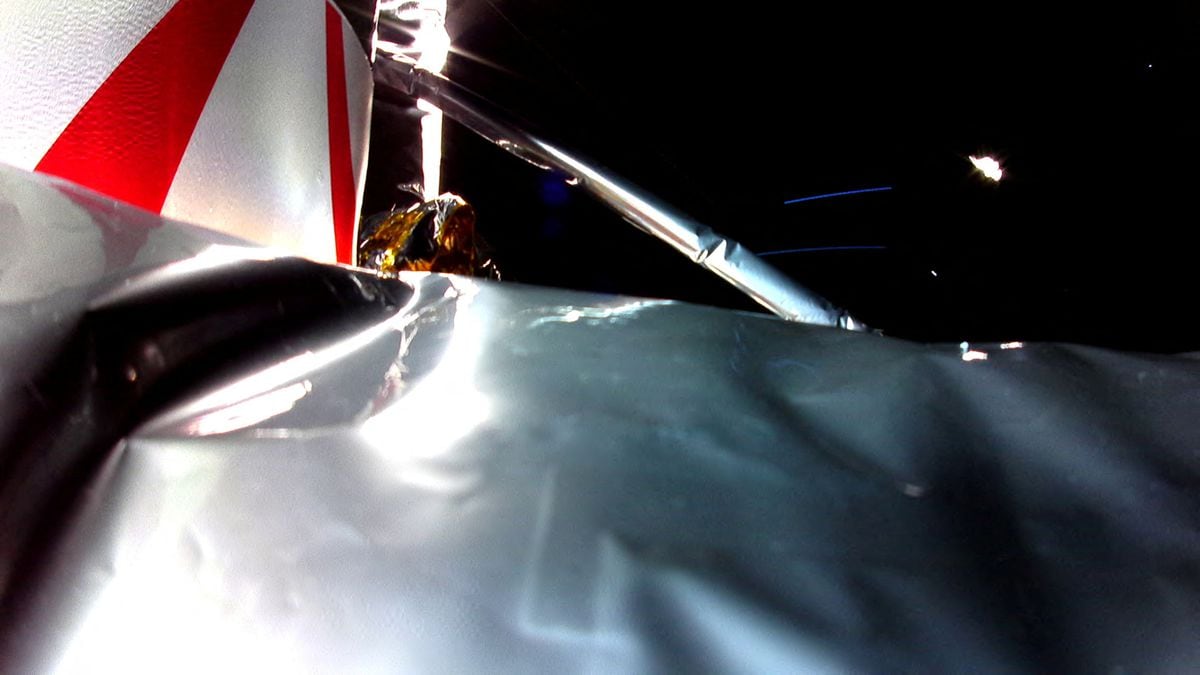The Peregrine lunar module returns to Earth, but to disintegrate forever along with all the objects it carried, from NASA scientific tools to the remains of former U.S. presidents. The device malfunctioned after the Vulcan rocket set it on course for its destination on Jan. 8. This "anomaly," as the U.S. company Astrobotic defined it, initially prevented its ship from being powered by sunlight. But after fixing that mishap, the company discovered the real problem: a fuel leak in its clawed propulsion system that was preventing it from meeting its goal. It could no longer become the first private lander to make a soft landing on the moon, nor be the first U.S. spacecraft to do so since 1972. Astrobotic and NASA are now announcing, a week after launch, that they will crash the Pilgrim into Earth's atmosphere so that it doesn't become an annoying piece of space junk.
"Working with NASA, we have received input from the space community and the U.S. government on the safest and most responsible course of action to end the Peregrine mission. The recommendation we have received is to allow the spacecraft to disintegrate during re-entry into Earth's atmosphere," Astrobotic said in a statement. "We must balance our own desire to extend Peregrino's life with the risk that our damaged spacecraft could cause a problem in cislunar space. As such, we have made the difficult decision to maintain the spacecraft's current trajectory to re-enter Earth's atmosphere."
Learn more
A Black Woman and a Black Man Will Travel to the Moon for the First Time in History
The vehicle, which is currently about 375,000 kilometers from Earth, will fall on Thursday 18 against the Earth's shield, expected north of Australia, according to some estimates. "We do not believe that the re-entry of Peregrino poses a security risk," Astrobotic said. The company was scheduled to hold a joint press conference with NASA on Thursday, January 18, to report on the evolution of the mission. The devices that travel on board the ship, from different institutions around the world, have managed to turn on and transmit without problems, and would have been able to fulfill their function if they had arrived safely.
The cargo of the 'Pilgrim 1' mission, in an image provided by United Launch Alliance.ULA
Among the 20 payloads carried by the spacecraft, in addition to scientific artifacts, there are symbolic objects, such as a time capsule with messages from 80,000 children around the world. Other, more controversial objects also travel: the mortal remains of dozens of humans sent by the U.S. space burial company Elysium Space, such as those of Star Trek creator Gene Roddenberry, science fiction writer Arthur C. Clarke, and three U.S. presidents: George Washington, Dwight D. Eisenhower, and John F. Kennedy. All of that debris will vaporize against the atmosphere.
After new data from JPL Horizons, as well as the latest statement from @astrobotic, it's now looking likely that #peregrine will return home, impacting Earth over the Great Barrier Reef on January 18. pic.twitter.com/hV3mGRgHIV
— Tony Dunn (@tony873004) January 13, 2024
This setback comes in the midst of an intense space race to the Moon that shows how the winning axis is shifting towards new players. The U.S. hasn't landed on the moon for five decades, Russia crashed its spacecraft a few months ago, and private attempts in recent years, by Israel and Japan, also failed. Meanwhile, in the last decade, China has successfully landed three aircraft and India has just done it.
The multi-company Peregrine-1 mission is part of NASA's Commercial Lunar Payload Services (CLPS) initiative, which is part of the return to the Moon plan within the Artemis program, in which the U.S., Europe, Japan and other countries collaborate. This mission is only the first of ten CLPS scheduled for the near future.
Next month, another private company, Houston-based Intuitive Machines, will launch a lunar lander aboard a SpaceX rocket. But first, a day after Peregrine disintegrated, Japan will try to land its SLIM spacecraft, a Japanese Space Agency lander that launched in September, on Jan. 19. If successful, Japan will become the fifth country to make a soft landing on the moon, after the Soviet Union, the United States, India and China.
"Every success and setback is an opportunity to learn and grow. We will use this lesson to drive our efforts to advance the science, exploration, and commercial development of the Moon," said Joel Kearns, deputy associate administrator for exploration in NASA's Science Mission Directorate, after learning of Peregrino's failure. NASA Administrator Bill Nelson said after the launch that these CPLS missions "will help understand the evolution of our solar system and shape human exploration for the Artemis program."
You can follow MATERIA on Facebook, X and Instagram, or sign up here to receive our weekly newsletter.

